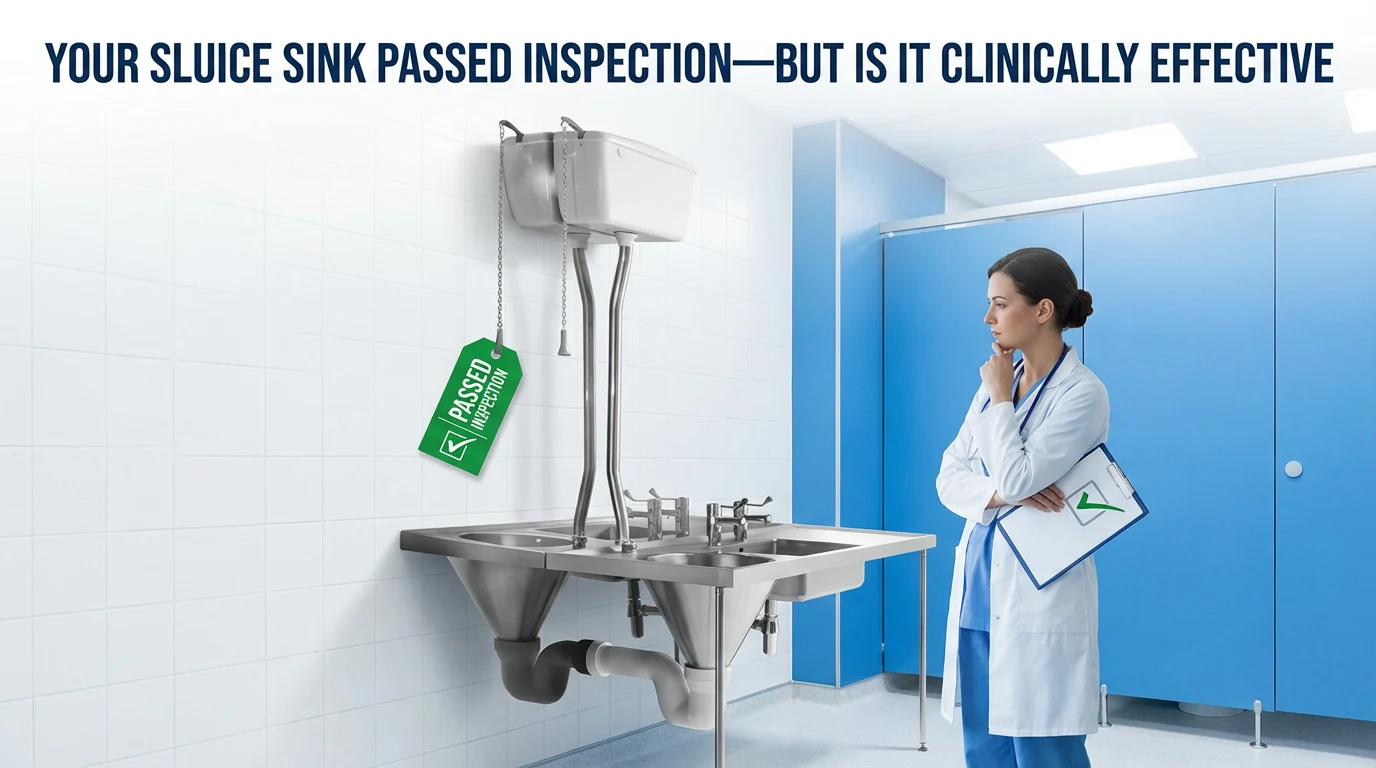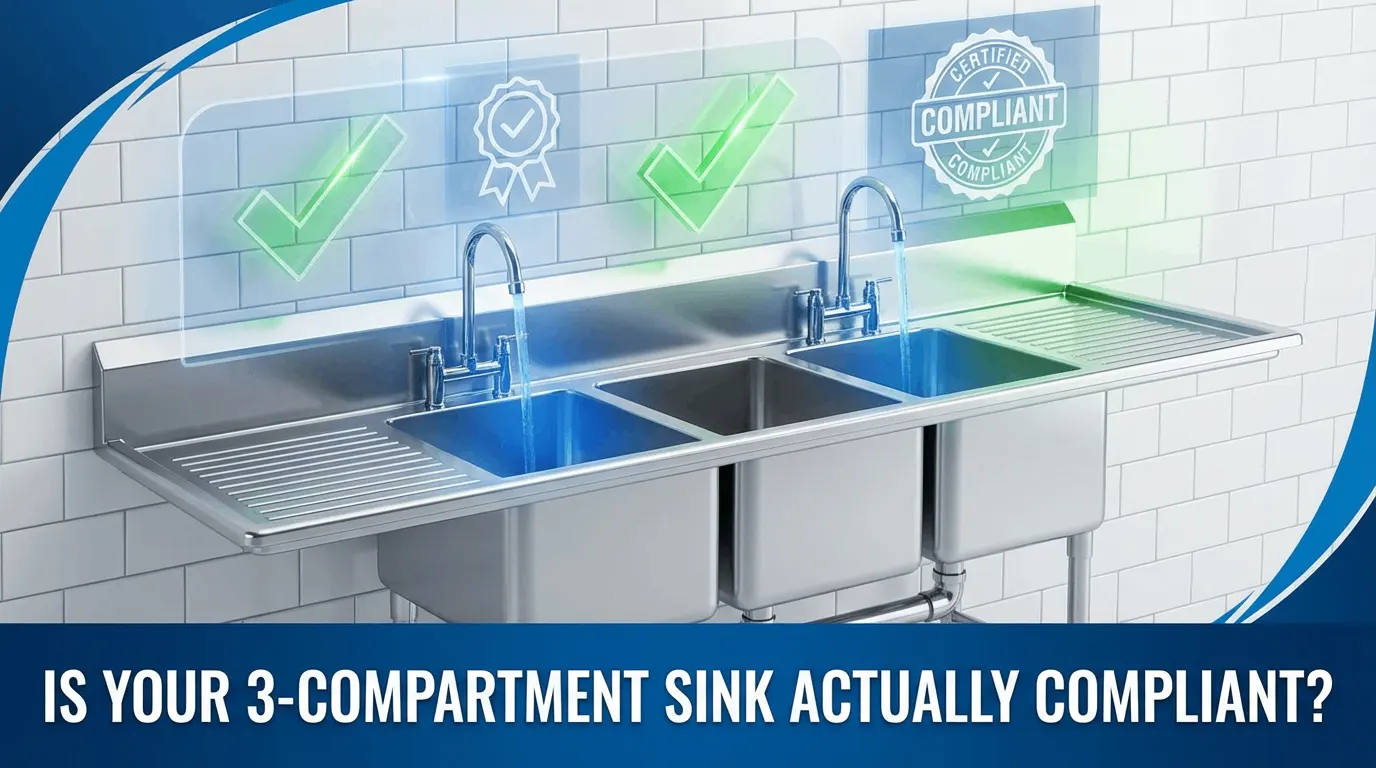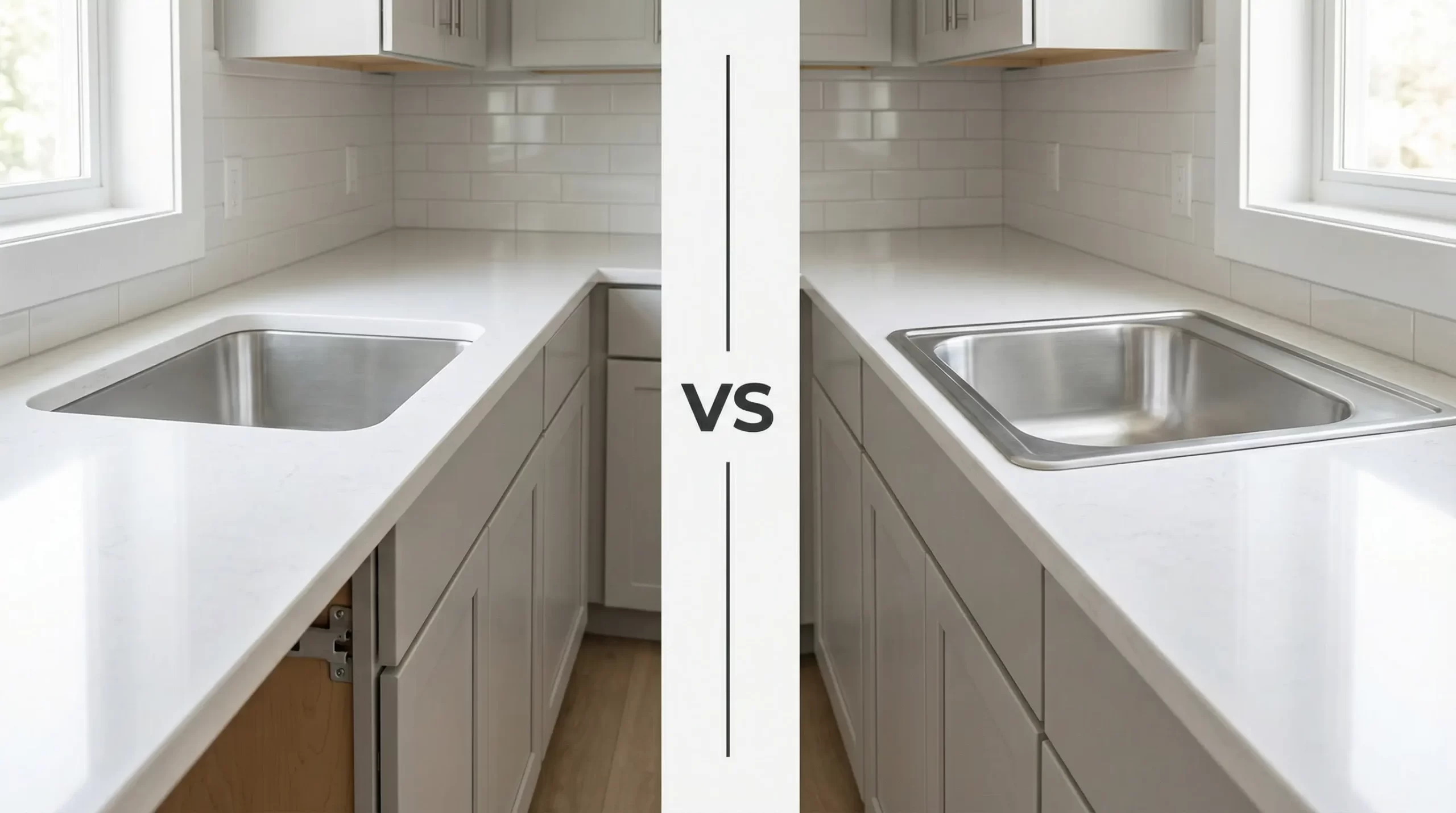How Often to Replace a Stainless Steel Sink
A stainless steel sink doesn’t come with a set replacement timeline. Its lifespan depends on factors like the quality of the material, how often it’s used, and how well it’s maintained.
Lifespan Varies by Use and Care
High-quality stainless steel 304 is a popular choice for its excellent rust-resistant sink and scratch-resistant sink properties. It’s commonly used in settings like commercial kitchen sink setups, laundry sink areas, and public flush sink facilities. However, constant exposure to hard water or improper cleaning can lead to hard water stains or wear over time.
With proper care, a stainless steel sink, whether it’s a deep sink or a single bowl sink, can easily last a decade or more. Regular cleaning with a mild detergent and using a sink grid for protection can significantly extend its life.
This article will guide you on when to replace your stainless steel sink and offer practical tips for maintenance and choosing a new one.
1. When to Replace Your Sink
Stainless steel sinks are known for their durability, but heavy use can cause them to wear out sooner than expected. Here are some signs it might be time to replace your sink.
1.1 Looks Damaged
Scratches and Dents Pile Up
When your sink is full of deep scratches or dents, even on a brushed finish or satin finish model, it can look old and tired. This is especially noticeable in bar prep sinks or flush sinks, where scratches can affect both hygienic sink standards and a professional appearance.
Rust Spots Ruin Shine
You might wonder, can a stainless steel sink rust? Yes, it can. While rust-resistant sinks are built to resist corrosion, hard water or harsh cleaners can leave small rust spots. If the mirror finish on your sink has faded and rust can’t be removed with sink cleaning tips, tips, the protective layer is likely damaged, signaling time for a replacement.
1.2 Function Problems
Leaks or Seeping Edges
Undermount sinks or wall-mounted sinks with leaks at the base or aging sealant can cause water to seep into cabinets or walls, leading to mold. This is a big issue in stainless steel laundry sinks or three compartment sinks, where seamless sink sealing is key.
Persistent Drain Clogs
Clogs in the sink drain are common in restaurant sinks or deep laundry sinks. If repeated attempts to clear the drain fail, it could mean the pipes are old, damaged, or structurally blocked, requiring professional inspection or a new sink.
Worn-Out or Incompatible Parts
You can replace a broken strainer or soap dispenser individually. But if your sink’s design is outdated or you can’t find matching parts, it’s a sign to consider a full replacement. For example, older laundry sink faucets might need an upgrade to work with a new sink.
1.3 Time for an Upgrade
Doesn’t Match Your Renovation
A kitchen renovation is a big project. If your old sink clashes with a modern sink style or a farmhouse sink vibe, swapping it out for something like an apron-front sink or integrated sink can refresh the whole room and boost its look.
Want Better Materials or Features
New sinks come with upgraded features. For instance, noise-reducing sinks have sound dampening pads to cut down on noise from water or dishes. Workstation sinks offer handy add-ons like a drainboard or bottom grid, perfect for commercial stainless steel sinks or a laundry room sink with cabinet.
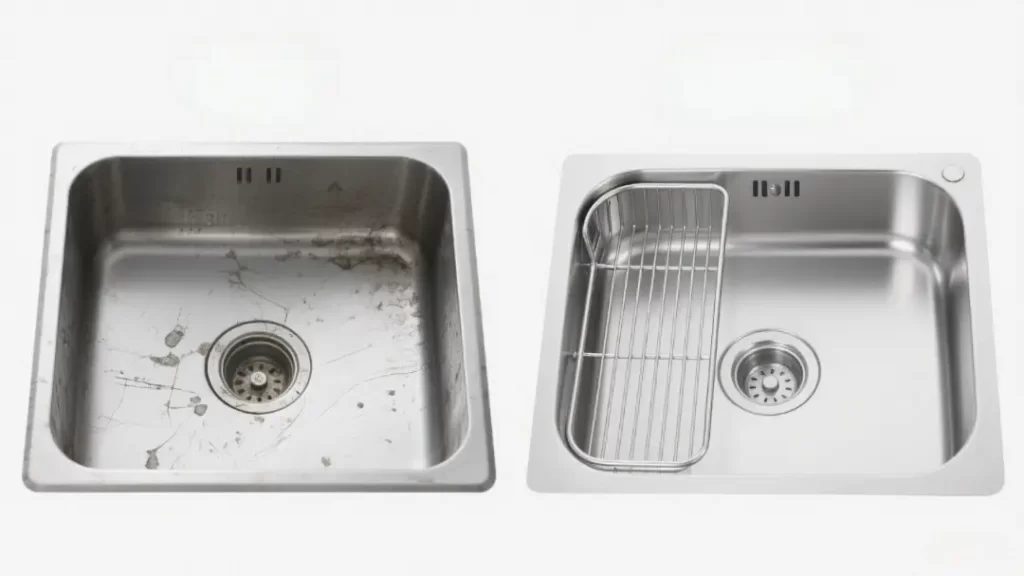
2. How to Extend the Sink’s Lifespan
2.1 Clean Regularly
Prevent Water Spots
- After each use, wipe down the sink with a soft cloth to prevent water spots removal and hard water stains from building up. This helps maintain the satin finish. A weekly deep clean with white vinegar or stainless steel polish works well, especially for mop basins in commercial settings or deep sinks at home.
Protect the Surface
- Use a soft sponge with mild soapy water for cleaning, and avoid steel wool to prevent scratches that can ruin the scratch-resistant sink surface. This is key for high-use bar sinks or utility sinks where keeping the surface intact matters.
2.2 Use It Right
Avoid Heavy Impacts
- Place pots and pans gently in the sink to avoid dings or dragging heavy items across the surface. Using a sink mat or sink protector like a bottom grid can shield the base, which is especially helpful in commercial sinks.
Steer Clear of Harsh Chemicals
- Strong acids, alkalis, or chlorine-based cleaners like bleach can cause corrosion on a rust-resistant sink, leaving tough stains. If these spill on the sink, rinse thoroughly with water and dry immediately. This is critical for lab sinks.
2.3 Regular Maintenance
Check for Leaks or Loose Parts
- Routinely inspect the seals on topmount installation or undermount installation sinks, and look for leaks around the utility faucet or laundry sink drain. Pay attention to the sink drain connections. Reseal with caulking or tighten screws as needed.
Fix Small Issues Promptly
- For slow drains or minor leaks, try eco-friendly drain cleaners or clear food debris from the drain opening. This is common in multi-use sinks or laundry utility sinks.
3. How to Choose a Stainless Steel Sink
3.1 Pick Quality Material
Go for 304 Stainless Steel
- Stainless steel 304 offers great rust-resistant sink and corrosion-resistant properties, making it ideal for residential sink, commercial stainless steel sink, and flush sink settings. For high-corrosion environments like a medical sink, opt for stainless steel 316 for even better durability.
Check Thickness
- Sink thickness is measured in gauge, where a lower number means thicker steel. For example, a 16 gauge sink is thicker than an 18 gauge sink, offering better resistance to dents and suiting heavy-duty sink needs. Also, consider an insulated sink to reduce noise, which is perfect for a bar prep sink where quiet operation matters.
3.2 Measure the Right Size
Getting the right size is key to a successful sink installation. You’ll need to measure:
- Sink dimensions
- Sink depth
- Sink width
Whether you’re choosing a single bowl sink, double bowl sink, or a trendy farmhouse sink, make sure the size fits your countertop or space perfectly.
For commercial three compartment sink or deep laundry utility sink, ensure there’s enough room for installation. In tight spaces, a small laundry sink works well, while a deep sink for laundry room is great for washing large items. A corner sink can also maximize space efficiency.
3.3 Choose the Right Installation Type
- Drop-in Sink: Easy to install, with the sink’s edge sitting on top of the counter. This topmount installation is budget-friendly and simple to replace later.
- Undermount Sink: Installed below the counter for a sleek look, this undermount installation makes it easy to wipe water or crumbs into the sink. It’s modern sink style fits well in upscale kitchens.
- Flush Mount Sink: A middle ground where the sink edge sits level with the counter, giving a smooth, seamless look.
- Wall-Mounted Sink: Common in laundry room sink or commercial sink settings, this option saves floor space.
3.4 Hire a Pro for Installation
Proper sink installation by a professional ensures a seamless sink fit, preventing sink leaking that could damage cabinets or cause mold. A skilled installer will also make sure the sink is secure and doesn’t wobble, saving you from future headaches.
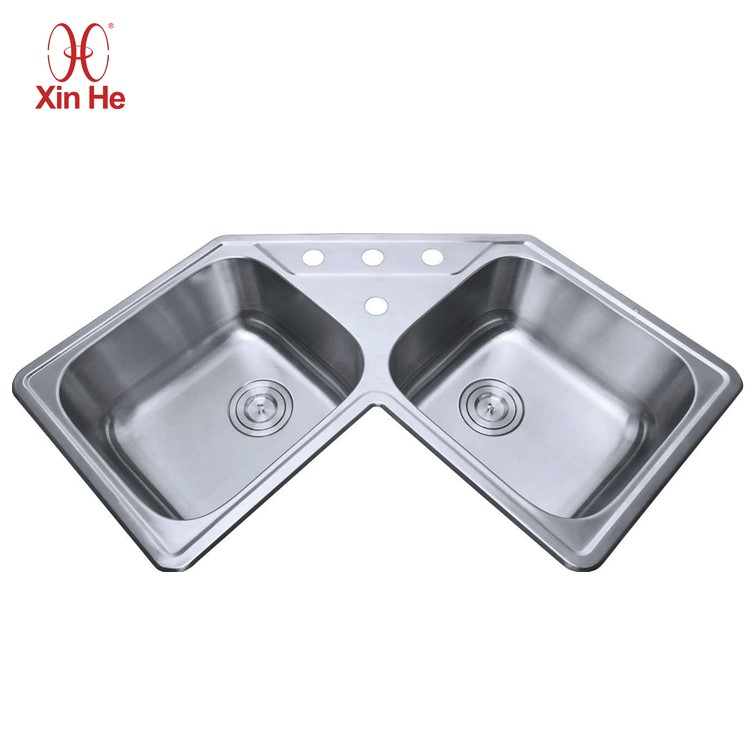
In Summary
If you notice your sink leaking, have scratches or rust spots that can’t be fixed, or if the sink’s basic functions aren’t working right, it’s probably time to replace your stainless steel sink. Keep in mind that good maintenance, like regular cleaning and proper use, is key to keeping your sink’s satin finish shiny and durable.


